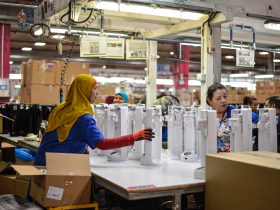A DNA microarray is a tool to determine if there are any mutations in the genes of a person be they hereditary or not. Simply put, it is a chip that is made up of a small glass plate, encased in plastic. Some companies make micro array chips in the same fashion as computer chips are made. Each chip contains, on its surface, thousands on strands of DNA, which add up to the normal gene under scrutiny. This makes it easy to locate variations or mutations in the gene sequence.
What is a Micro Array used for?
Originally, when they were first introduced, microarrays were used solely for research. These days, they are still used primarily for research, mostly to find out how mutations of various diseases occur. Specifically, their research is associated with certain diseases.
It has also become possible that new ‘features’ can be added to the micro array chips to further enhance their function. Other ways that microarrays can be used are as follows:
- Study the extent to which certain genes are either functioning or not functioning in cells and tissues. In this case, instead of isolating the DNA, the RNA is separated from the samples and taken to be measured.
- The microarrays are used in diagnostic tests to the chemistry of different drugs. This method can be used to find out what drug works best on various diseases. It also monitors the effect of different dugs on the cells.
- Because of new DNA sequencing technologies, tests that used microarrays before now turned to DNA sequencing. But since microarray studies are less expensive and can be used for a large amount of tests, they are still functioning well.

How Does a Microarray work?
First, a scientist or researcher takes a sample from the patient’s DNA to study. Two samples are taken, one is from the ‘contaminated’ DNA and the other is the control sample, which does not contain any mutation are used. The researcher then denatures the samples; a process that separates two complementary DNA strands into single strand molecules.
Next, the long strands of DNA are cut, turned into manageable fragments and labelled by fluorescent dyes. Normally, the patient’s DNA is dyed green and the controlled DNA is often red. There are more ways to label the samples, but this is the most effective and vastly used.
Both sets of labelled DNA are then allowed to bind to the synthetic DNA already in the microarray chip.
If the individual does not have a mutation in their gene, then both the red and green samples will bind to the ‘normal’ sequence of the chip. If the patient does possess a mutation, then the DNA will not bind with the sequence in the chip, instead, will bind to the DNA that represents the mutated gene.
Microarrays have improved the professions of researchers, doctors and scientists alike. With their ability to take on thousands of samples at a time, they have taken research and diagnosis of diseases to higher levels.
Tommen Wilkinson is an aspiring scientist, pursuing studies in the research of microbiology. He finds http://www.arrayjet.co.uk/ as a helpful site for the latest technology in microarrays.
























